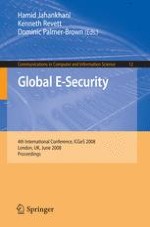In today’s society, where technology is ubiquitous, protecting ourselves with firewalls is as important as defending ourselves with firepower. New technology is providing criminals with a world of opportunity, while law enforcement agencies all over the world are struggling to cope. E-security is an issue of global importance. In many ways, cybercrime is no different to more traditional types of crime – both involve identifying targets, using surveillance and psychological profiling of potential victims. The major difference is that the perpetrators of cybercrime are increasingly remote to the scene of their crime and that in some cases their victims may not even realize that a crime is taking place. Knowledge of the techniques being used by criminals and the technology and tra- ing available to combat them is essential in fighting cybercrime. Establishing dialogue between crime-fighting agencies, the security industry, researchers and experts can provide a platform from which e-security can be examined from several global p- spectives.
